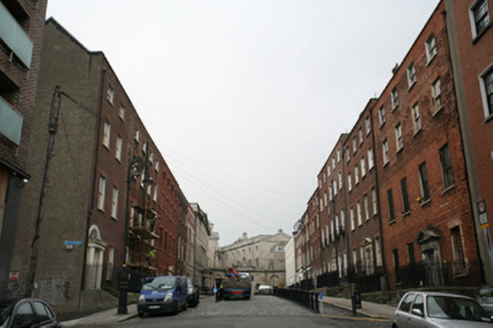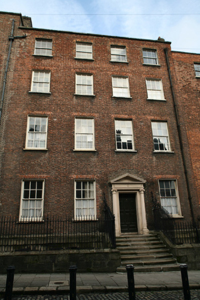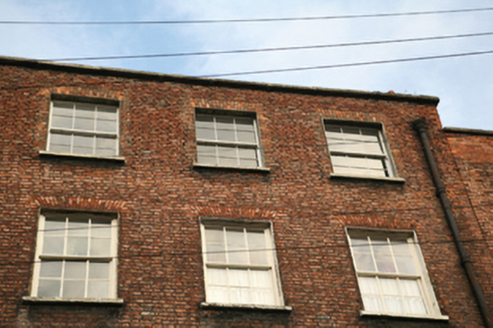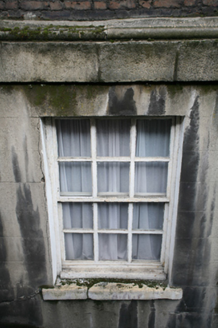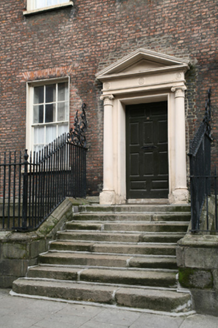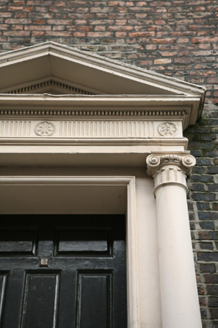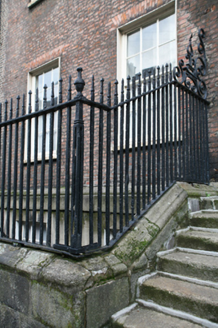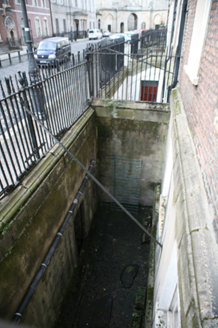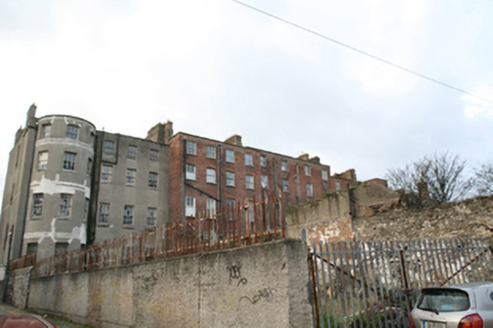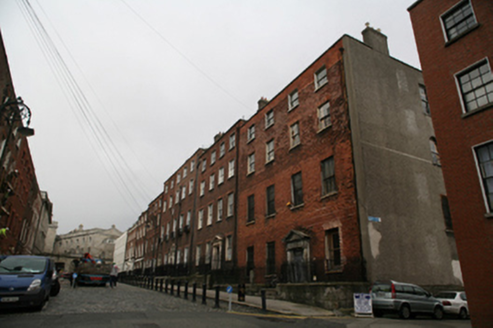Survey Data
Reg No
50010682
Rating
Regional
Categories of Special Interest
Architectural, Artistic
Original Use
House
In Use As
House
Date
1740 - 1750
Coordinates
315251, 234971
Date Recorded
08/12/2011
Date Updated
--/--/--
Description
Terraced four-bay four-storey house over raised basement, built c.1745. Pitched slate roof to front with pair of hipped sections to west and further pitched section running perpendicular to street and hipped to rear. Roof hidden behind parapet wall with granite coping and cast-iron hopper and downpipe breaking through to east end. Stepped brown brick chimneystacks to both party walls with brick coping and clay pots. Red brick walls laid in Flemish bond on moulded granite plinth course over ruled-and-lined rendered basement walls. Red brick walls laid in Flemish bond to rear elevation advanced beyond neighbouring elevations. Gauged red brick flat-arched window openings with rendered reveals, masonry sills and replacement six-over-six pane timber sliding sash windows, possibly earlier six-over-six pane sashes to basement with wide glazing bars and partly exposed sash boxes. Square-headed door opening with painted stone pedimented Ionic doorcase, added c.1780. Early timber door with ten raised-and-fielded panels and stone architrave surround flanked by engaged Ionic columns on plinth blocks supporting architrave, fluted frieze with paterae and triangular dentillated pediment. Door opens onto granite platform and eight granite steps bridging basement. Platform and basement enclosed by wrought-iron railings with decorative scrolled ironwork flanking entrance, corner posts with cast-iron finials, all set on moulded granite plinth wall with matching iron gate to east providing basement access via stone steps. Rear plot enclosed by timber gate opening onto Henrietta Lane.
Appraisal
This property was leased by Nathaniel Clements to John Maxwell in 1747, who developed the neighbouring house (No. 3) and mirrors No. 7. Remodelled in the 1780s, the interior retains an original staircase and service stair with original neo-Classical plasterwork and joinery. This well-maintained private residence having a deeper plan than the majority on the terrace and, with its pedimented doorcase, elaborate ironmongery and impressive flight of steps, forms an important part of what has been described as 'Dublin’s Street of Palaces'. Laid out by Luke Gardiner in the 1720s, Henrietta Street is a short cul-de-sac containing the finest early Georgian houses in the city and was named after Henrietta Crofts, the third wife of Charles Paulet, 2nd Duke of Bolton and Lord Lieutenant in 1717-21. The street developed in a piecemeal fashion and set the trends of scale and design in domestic architecture.
